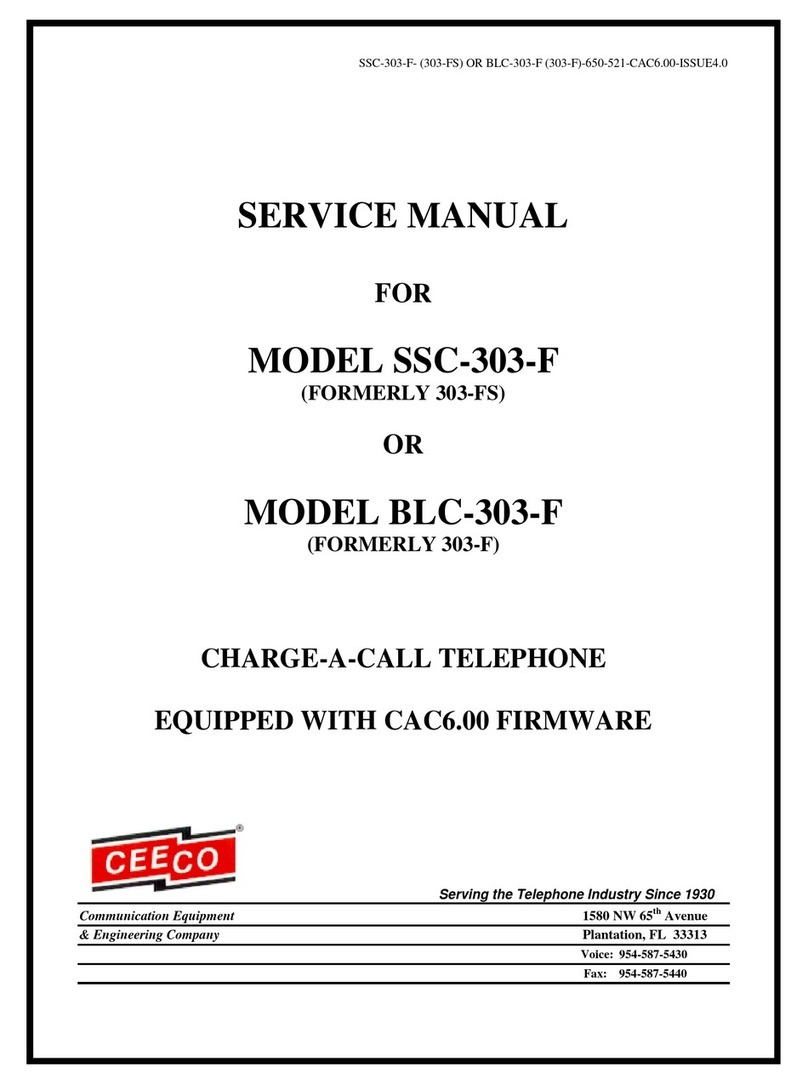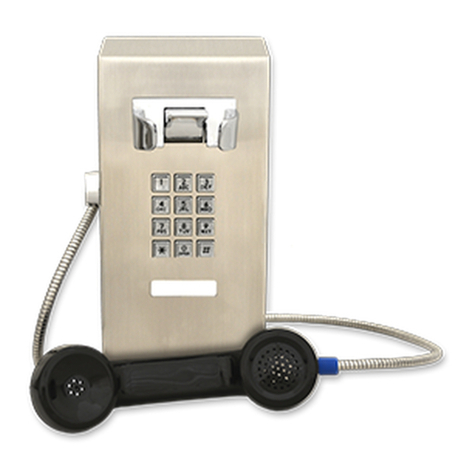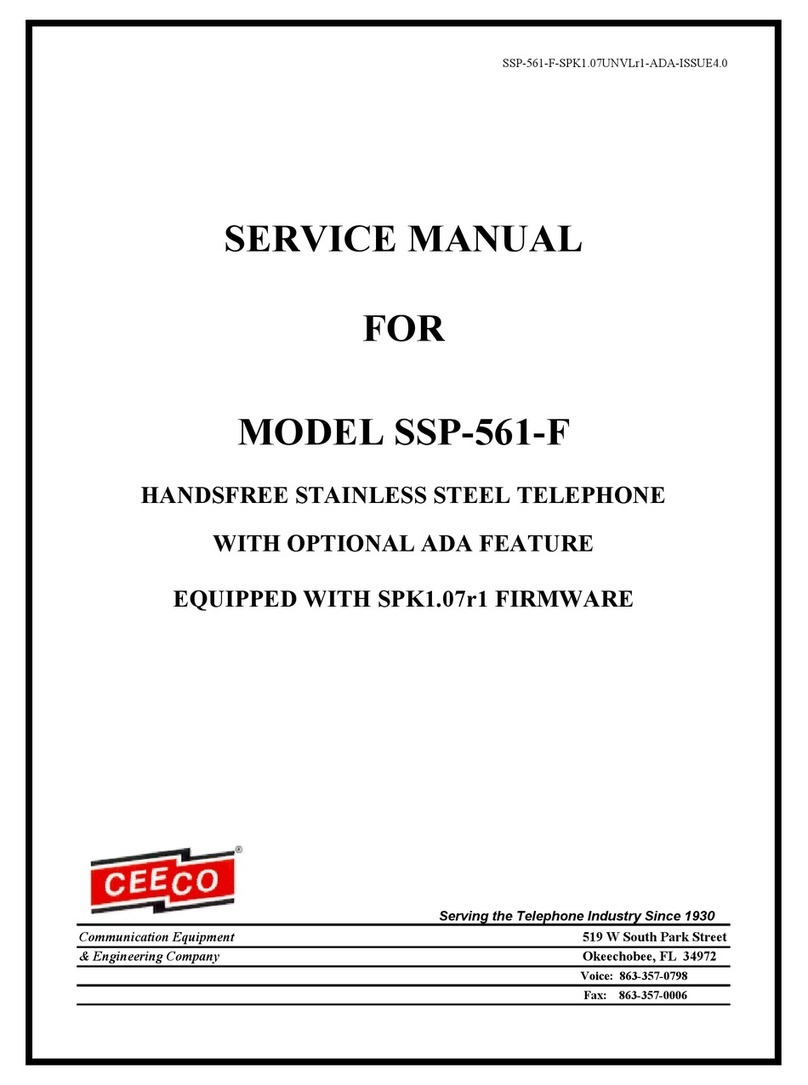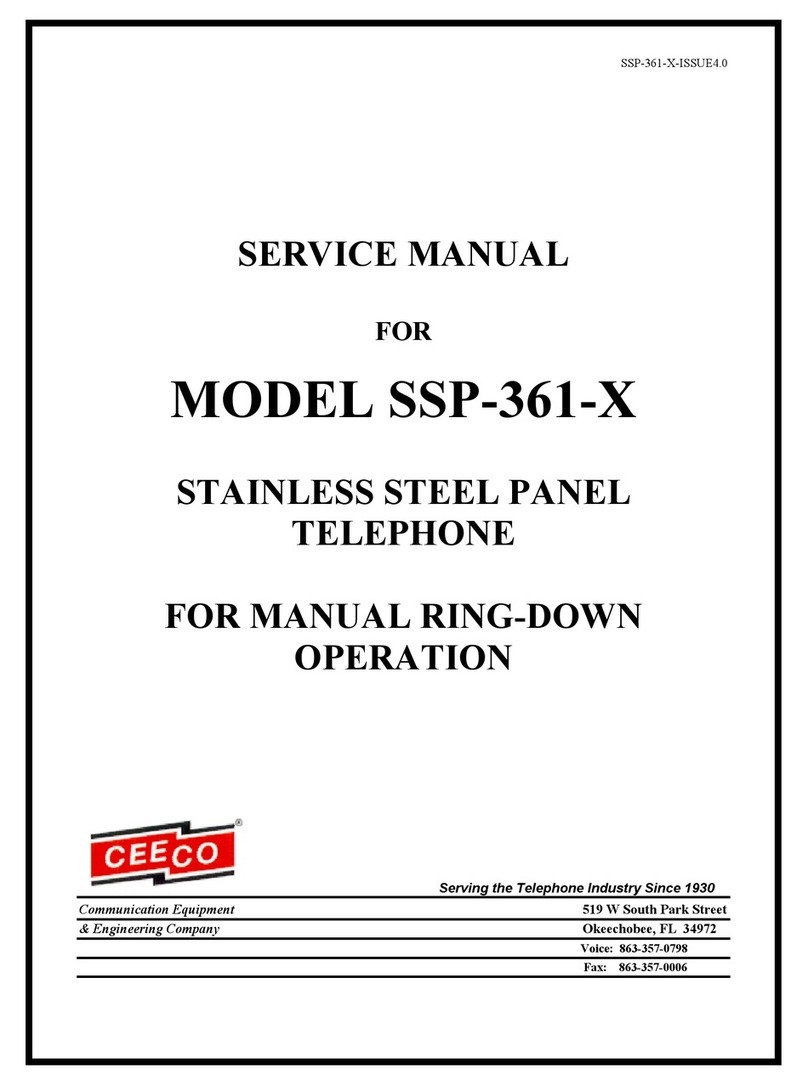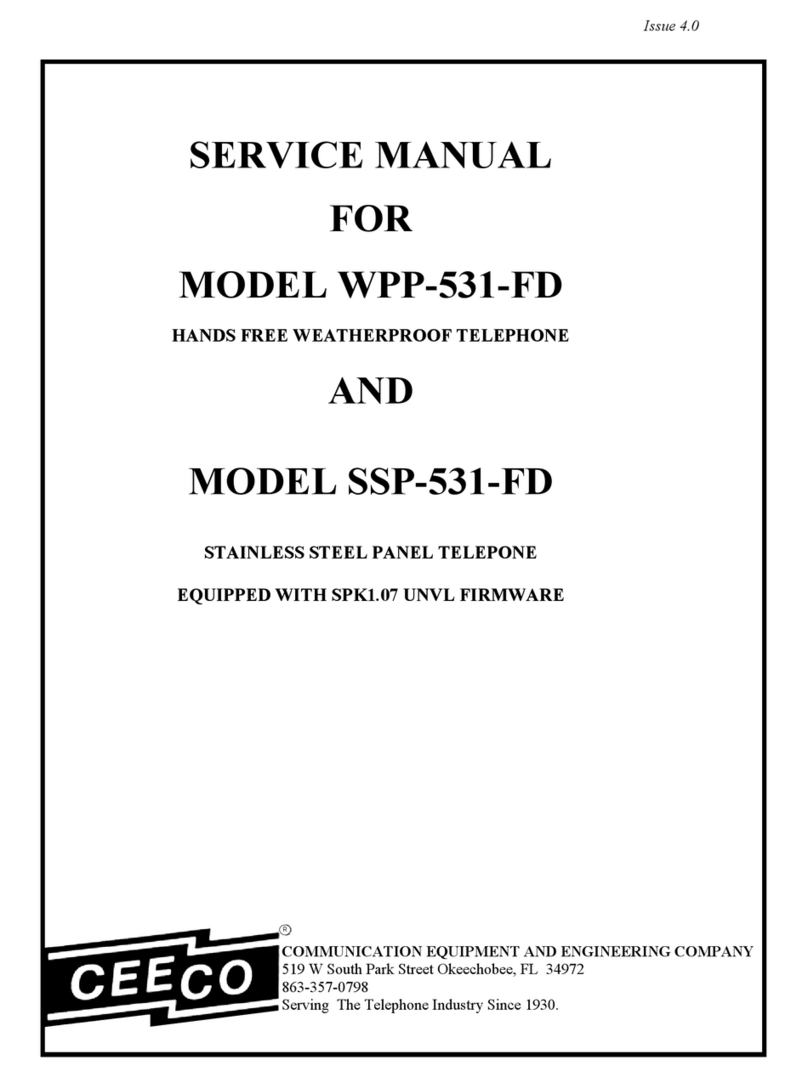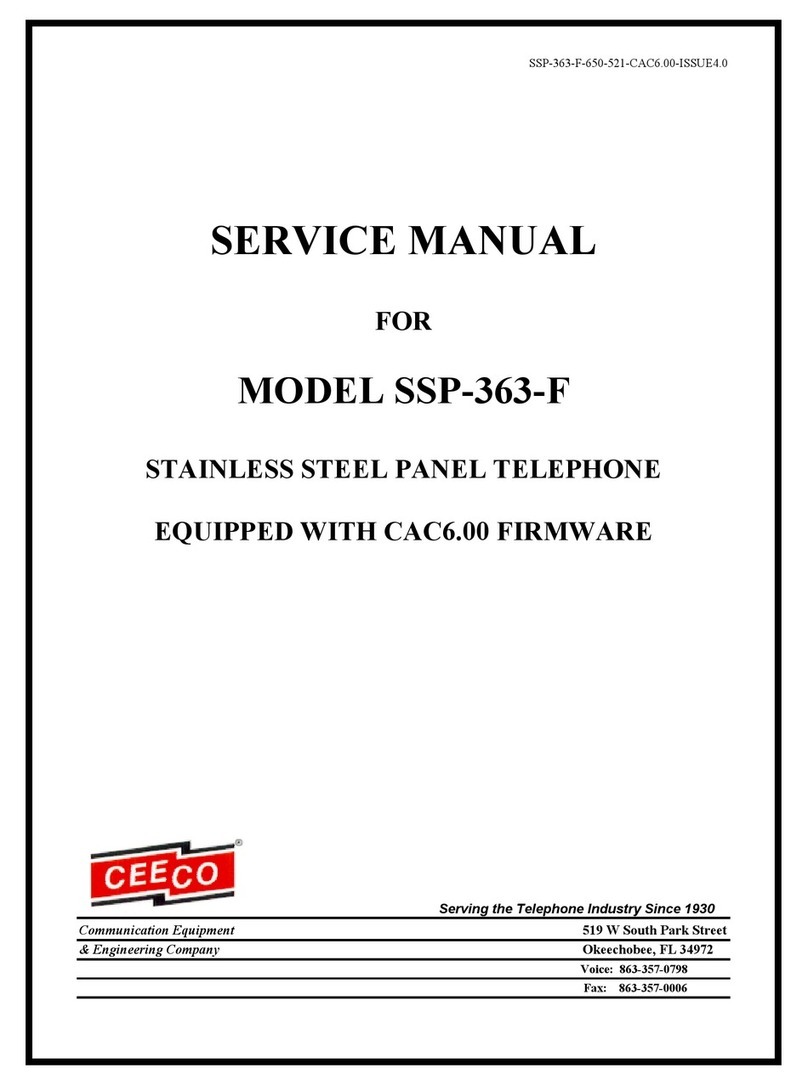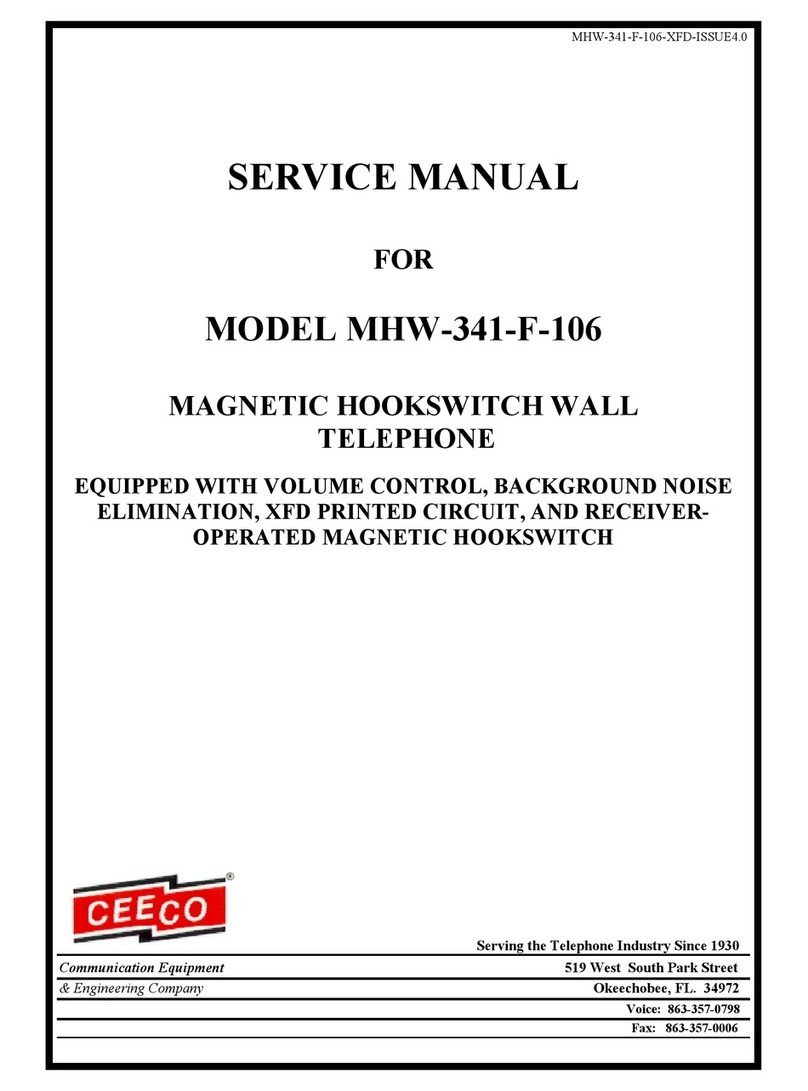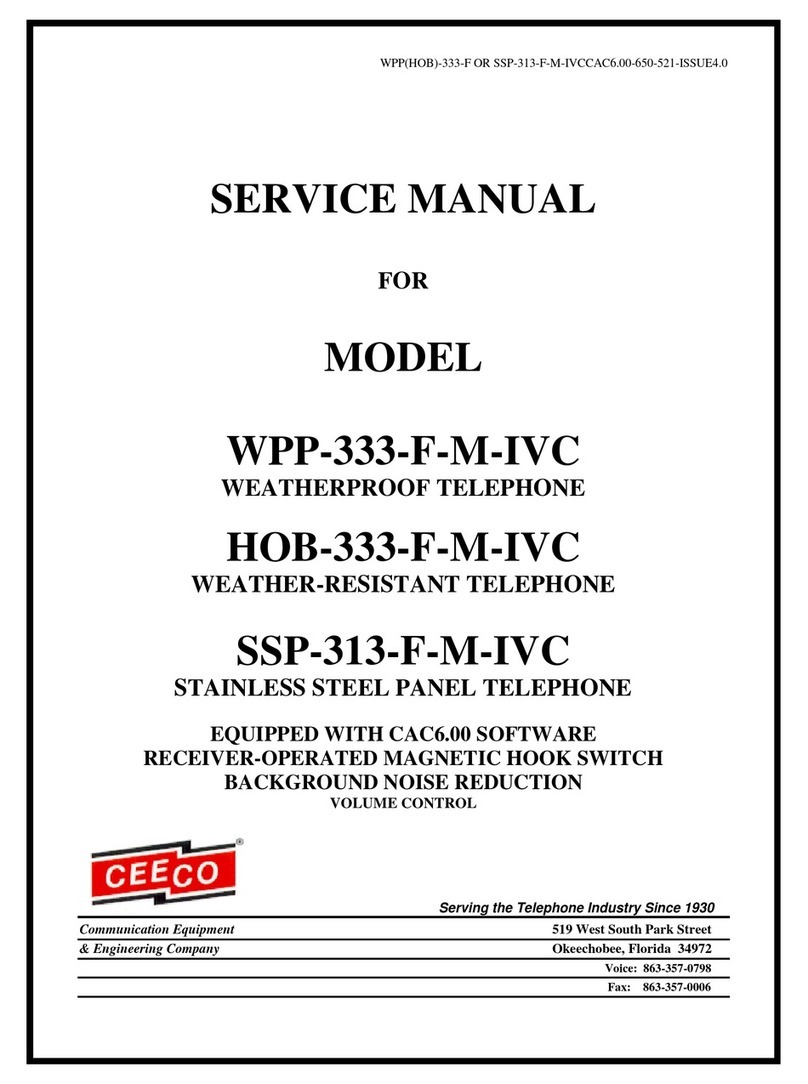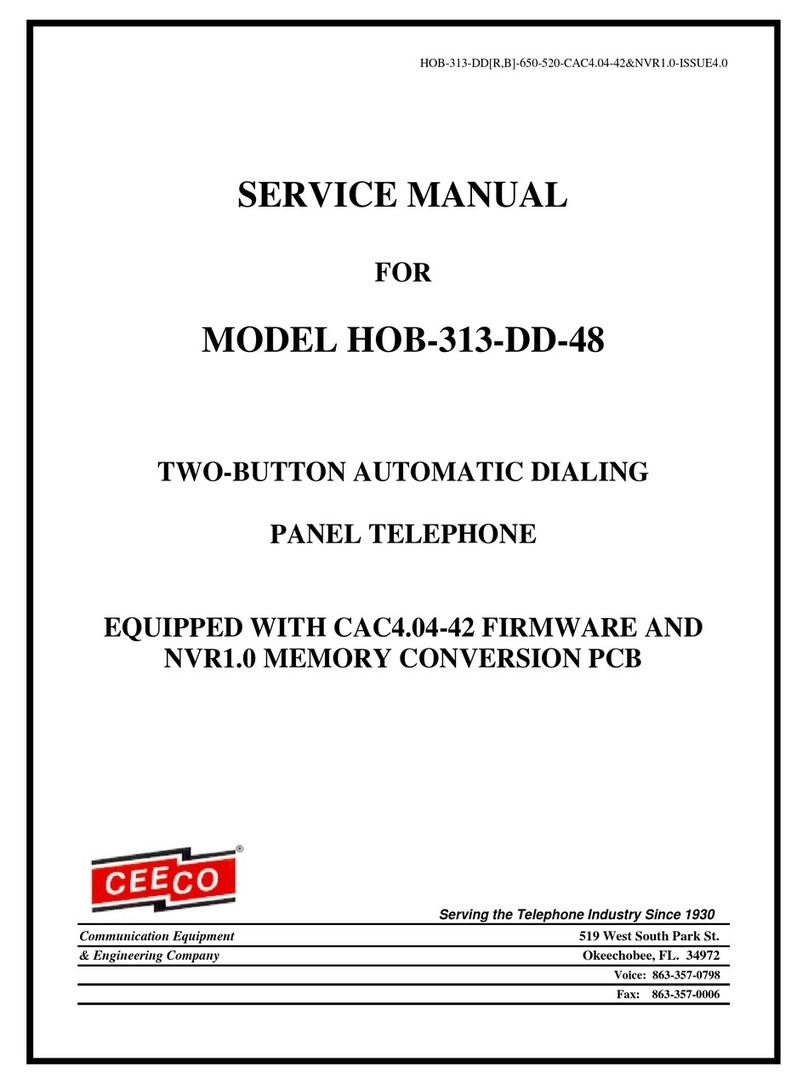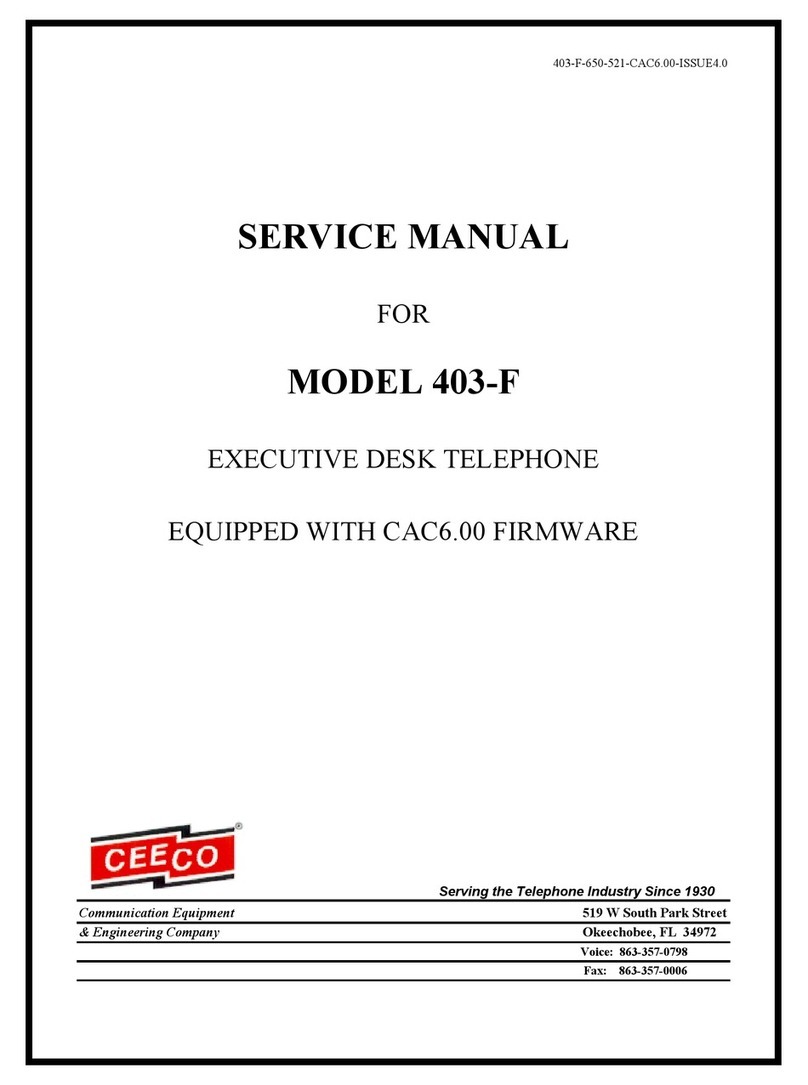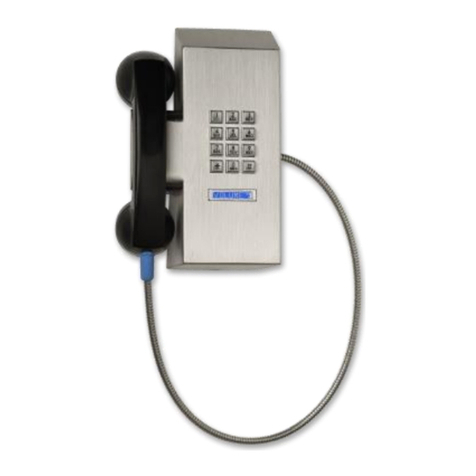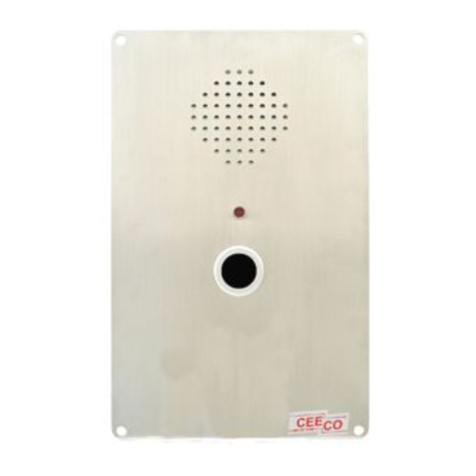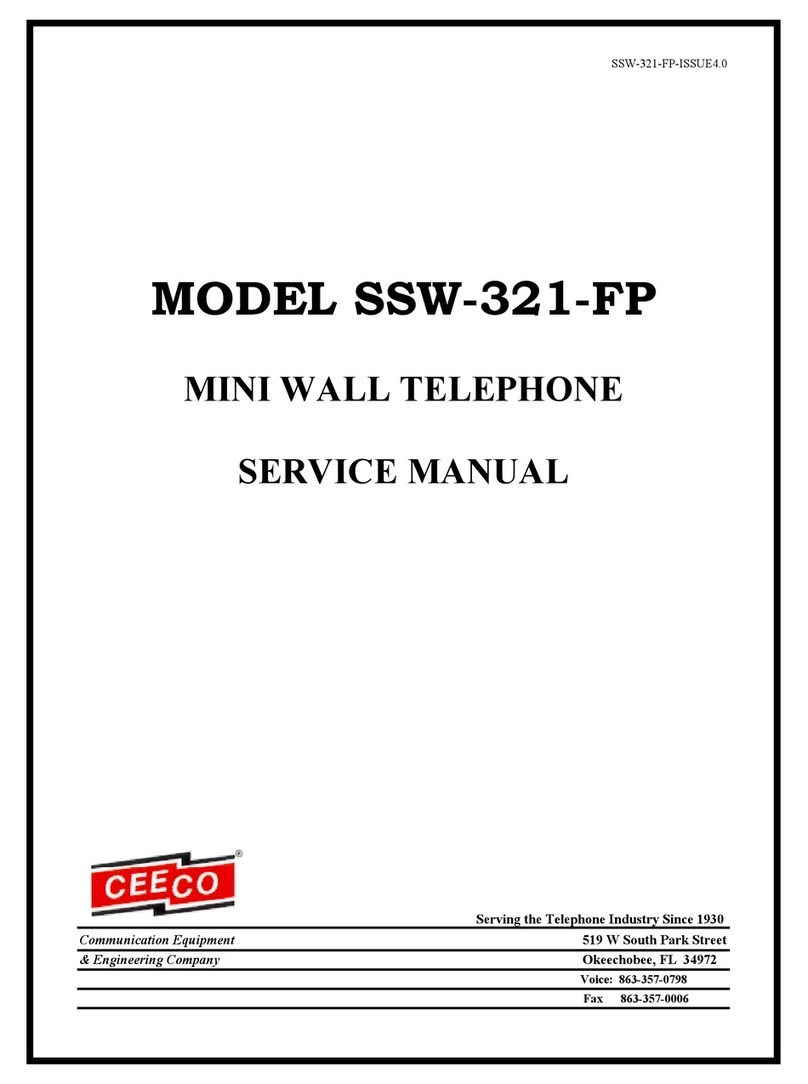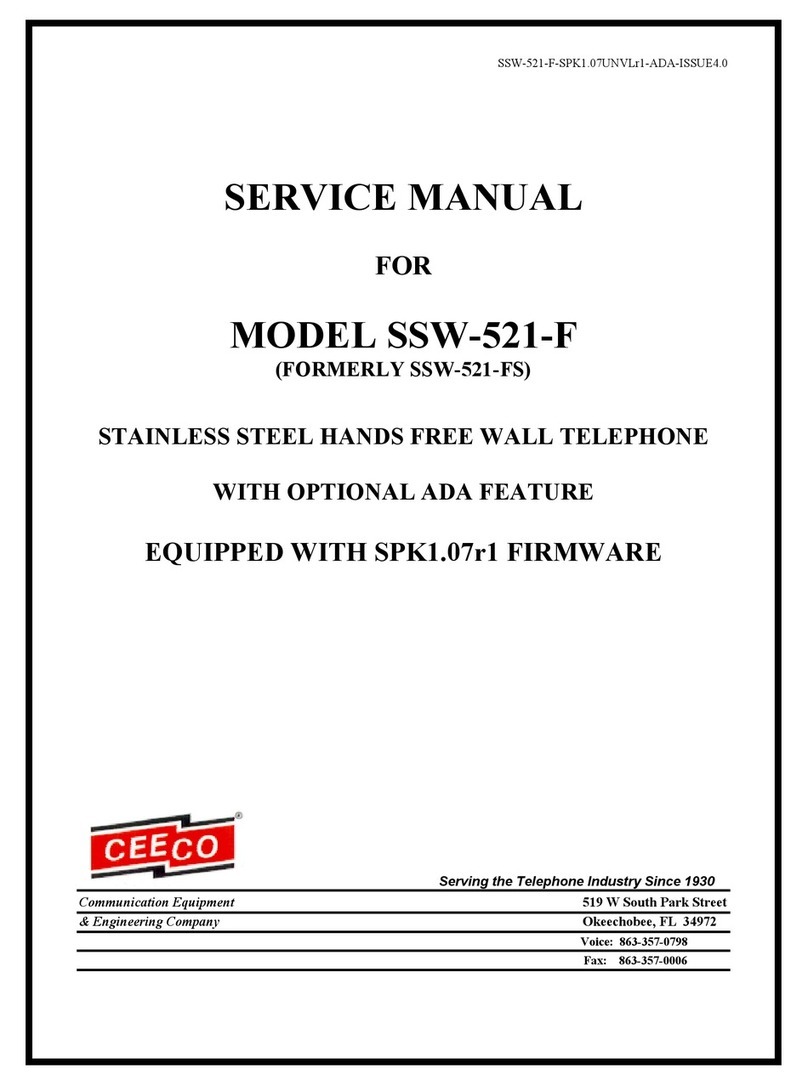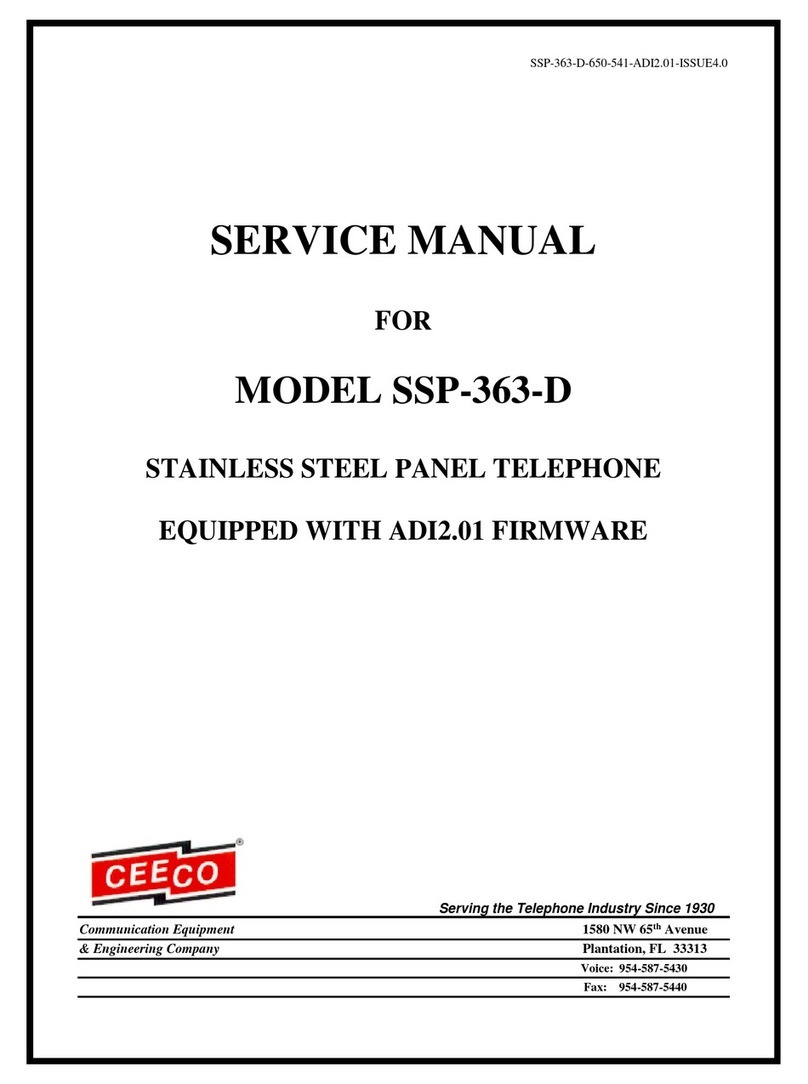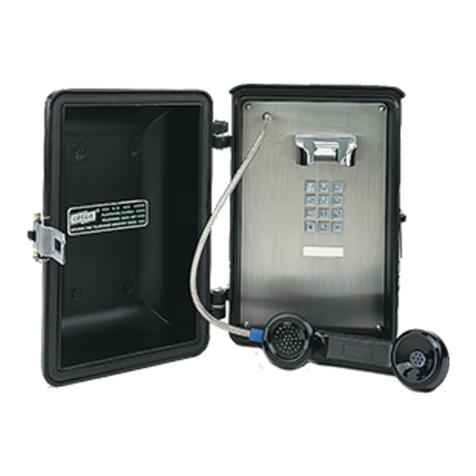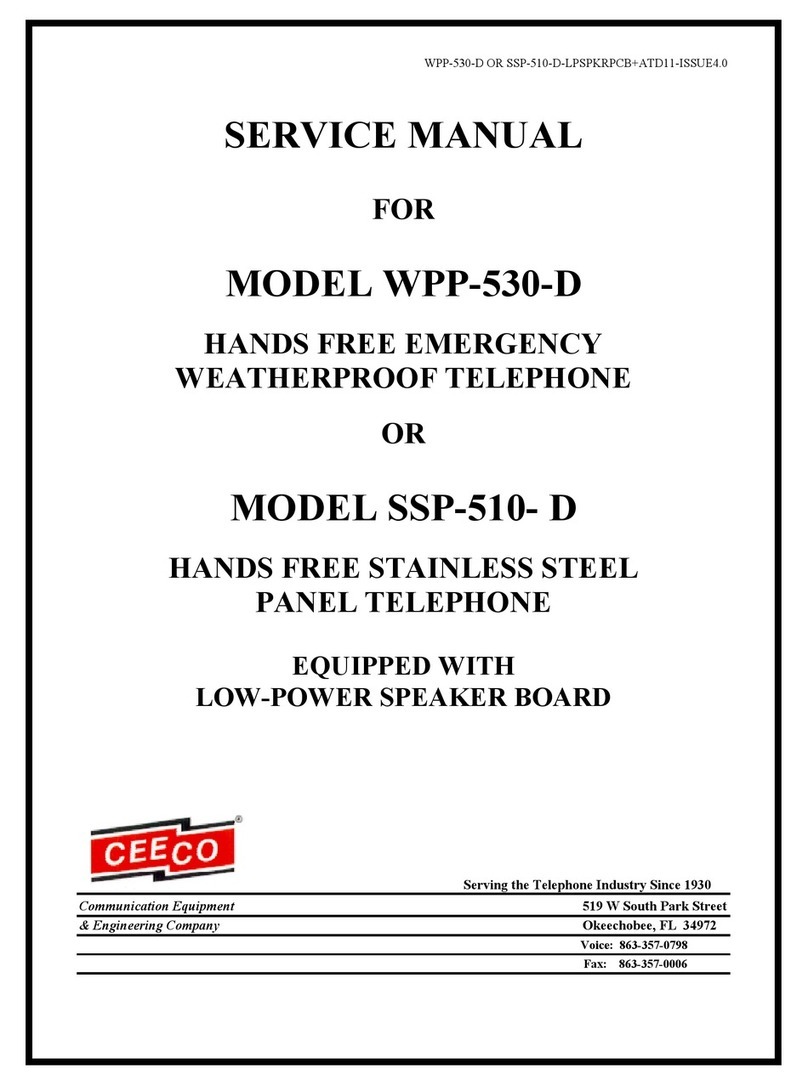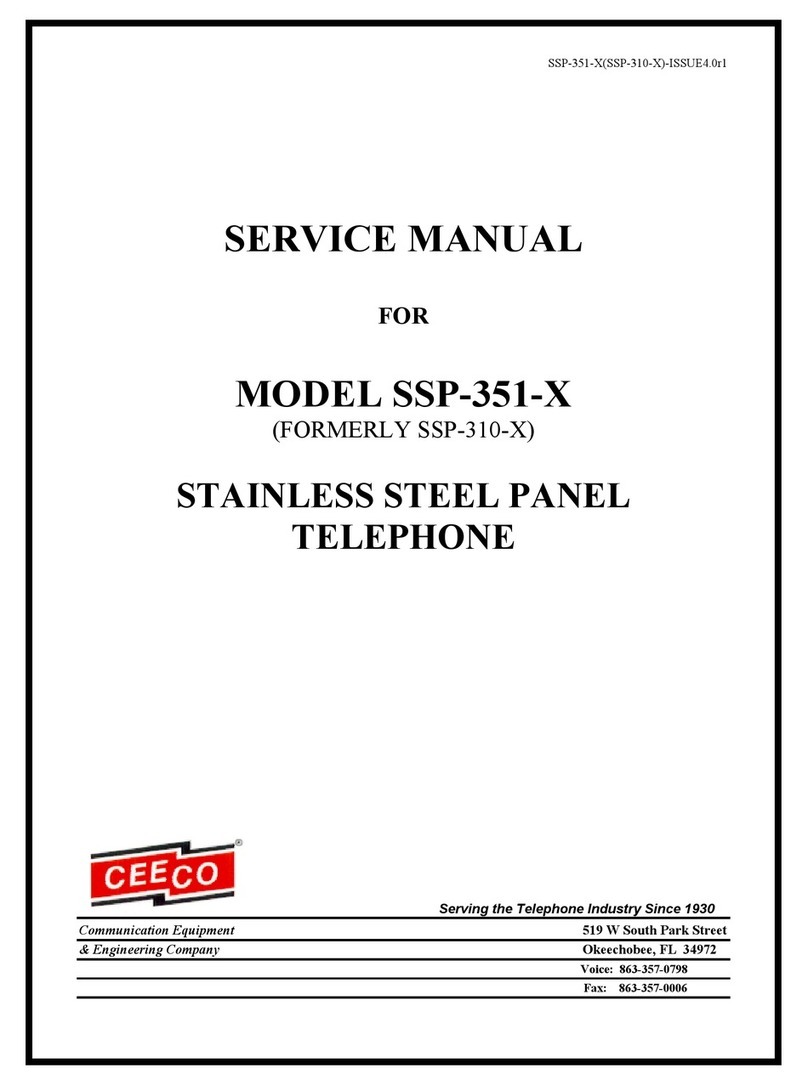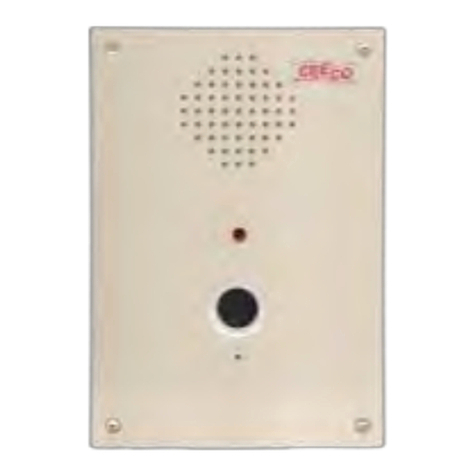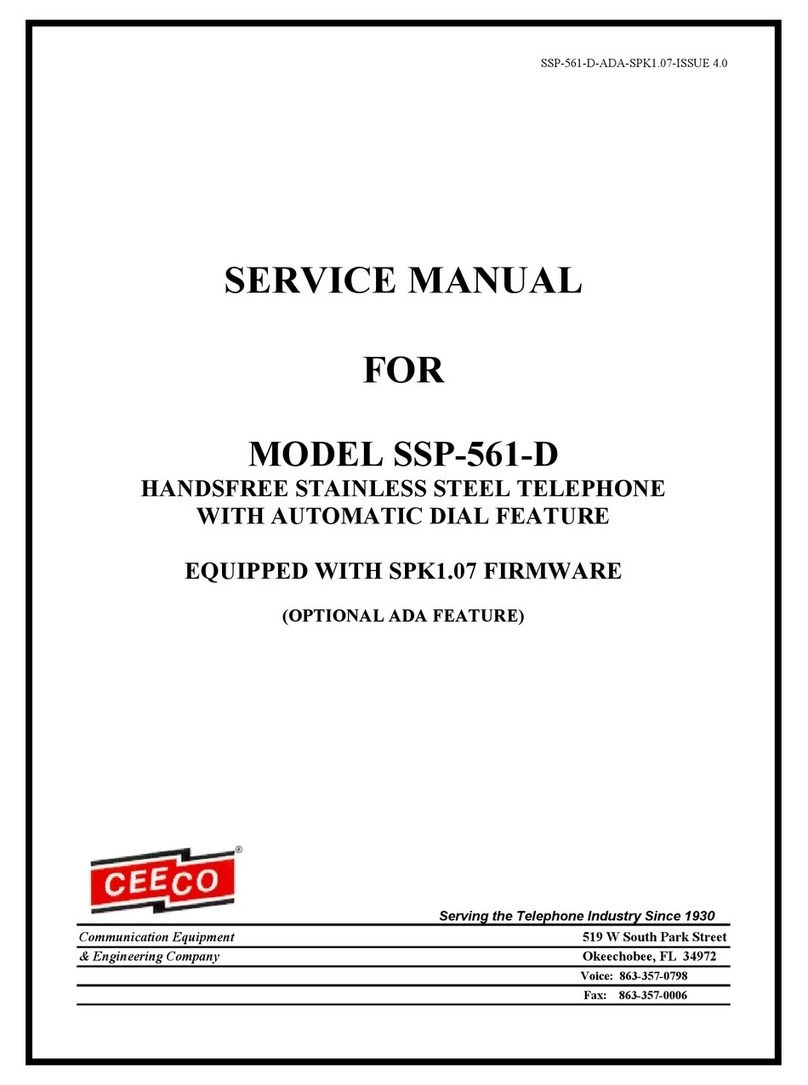
ISSUE 4.0
CEECO
Communication Equipment & Engineering Company
PROPRIETARY
9
4.0 TESTING/OPERATION
4.1 Lift the handset, the telephone will wait for dial tone. The handset
transmitter is muted (off) until dialing is started. There is a 1-2 second
delay before the keypad is enabled. If a number was programmed into
location #19, it should dial out at this time. If a number was programmed
into location #18, it should dial out approximately one second after the
number stored in location #19. After the number(s) dial out, the keypad is
left enabled to allow entering credit card or other numbers, if needed. If
the auto-dial number(s) does not dial out, repeat programming sections
3.2, 3.3, 3.7,3.8, and 3.12 only. If the phone still does not automatically
dial the numbers, when the handset is lifted, please refer to section 11.2.
4.2 If the phone was programmed to implement call restrictions, try calling a
number that is not “allowed”. Three tones are heard. The line opens
momentarily. Dial tone returns. The transmitter is muted. Try calling a
number that is “allowed”. Normal phone operations should follow. If the
restrictions do not seem to work properly, repeat sections 3.2, 3.3, 3.6, 3.9,
and 3.12 only. If restrictions still do not work, please refer to section 11.2.
4.3 If, at any time, the "*" key is pressed, three tones are heard, the line
momentarily opens followed by return to dial tone. The transmitter is
muted. This is, however, contingent upon call restrictions being “in
effect” (section 3.6) and the “*” key not being programmed as an
“allowed” item (section 3.9).
4.4 If the phone was not set to implement restrictions, try making a normal
phone call. Normal operation should follow. If not, repeat sections 3.2,
3.3, 3.6, and 3.12 only. If this does not solve the problem, please refer to
section 11.2.
4.5 Place a call into the telephone. If the phone was programmed to allow
incoming calls, the phone will ring and normal phone operation will
follow. If programmed so that incoming calls are not allowed, the phone
will still ring. When it is answered, however, the answering party will not
be heard, because the transmitter is muted during the entire attempt. The
keypad will also be disabled. The phone will generate a series of error
tones, heard by both parties, approximately four seconds after the
incoming call is answered.
4.6 Attempt to "hookswitch dial" by tapping quickly on the hookswitch. The
telephone should hang up and return to dial tone.
